Table of content
Crayfish, often referred to as crawfish, crawdads, or mudbugs, have become a culinary sensation worldwide. These small, freshwater crustaceans are beloved for their sweet, tender meat and the communal joy they bring to dining tables. However, for many, the experience of eating crayfish can be intimidating. Their spiky shells, hidden meat pockets, and messy preparation often leave novices puzzled. This article demystifies the process, offering a step-by-step guide to eating crayfish with confidence, finesse, and minimal waste. Whether you’re hosting a backyard boil, dining at a seafood shack, or exploring global cuisines, mastering the art of crayfish consumption will elevate your appreciation for this beloved delicacy.
Understanding Crayfish: A Brief Introduction
Crayfish belong to the Astacoidea and Parastacoidea superfamilies, with over 500 species worldwide. They thrive in freshwater environments like rivers, lakes, and streams, and are harvested both wild and farmed. Their popularity surges in regions like the American South, Louisiana being the epicenter, as well as in Scandinavia, China, and Australia. Culturally, crayfish boils symbolize celebration, friendship, and relaxation—events where hands get messy, stories flow, and laughter echoes.
But why the fuss over such a tiny creature? The answer lies in their unique flavor profile. Crayfish meat is delicate yet rich, with a subtle sweetness that pairs beautifully with bold seasonings like Cajun spices, garlic, lemon, and dill. Their versatility allows them to be boiled, grilled, fried, or even incorporated into dishes like étouffée, bisque, or tacos. Yet, no matter the cooking method, the true test of a crayfish enthusiast lies in their ability to extract every morsel of meat efficiently.
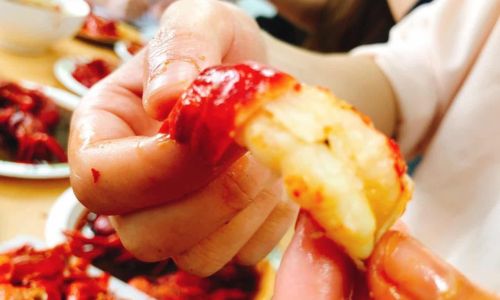
Selecting the Perfect Crayfish
Before diving into eating techniques, it’s crucial to start with quality crayfish. Freshness directly impacts taste and texture. When purchasing live crayfish, look for specimens that are active, with intact shells and no discoloration. Avoid those with a foul odor or lethargic movement, as these may indicate spoilage.
For pre-cooked crayfish, check for vibrant color (bright red after cooking) and firm shells. Size matters too: larger crayfish yield more meat but can be tougher, while smaller ones (often called “selects” or “field runs”) offer tender meat but require more effort to peel. Balance is key—opt for medium-sized crayfish for the best of both worlds.
Preparation: Cleaning and Cooking
Proper preparation ensures both safety and flavor. Live crayfish should be purged before cooking to remove impurities. This involves placing them in a container of ice water for 20–30 minutes, which stuns them and encourages them to expel mud or debris. Some chefs also add cornmeal or salt to the water to aid in cleansing.
Cooking methods vary, but boiling is the most common. A classic Cajun boil involves submerging crayfish in a seasoned broth of water, onions, lemons, garlic, and spices like cayenne, paprika, and bay leaves. The crayfish are cooked until their shells turn bright red (about 3–5 minutes), then tossed in butter or oil to enhance flavor. Grilling is another option, imparting a smoky char that complements the meat’s sweetness.
The Anatomy of a Crayfish: Know Your Enemy
To eat crayfish efficiently, familiarize yourself with their structure:
- Head: Contains the majority of flavorful components, including the tomalley (liver/pancreas) and roe (eggs in females).
- Thorax: The segmented body where the legs and claws attach.
- Abdomen (Tail): The cylindrical section housing the largest portion of meat.
- Claws and Legs: Smaller meat pockets, often overlooked but worth the effort.
Step-by-Step Eating Technique
Eating crayfish is a tactile experience. Embrace the mess—it’s part of the fun! Here’s how to maximize your yield:
Twist and Pull the Head
Hold the crayfish firmly by the thorax (the part just behind the head). Gently twist the head in a counterclockwise motion until it separates from the tail. Some diners discard the head, but it’s a treasure trove of flavor. Suck the juices from the head cavity (a practice called “sucking the head”) for a burst of spicy broth and rich tomalley. Note: If you’re squeamish about consuming internal organs, skip this step.
Peel the Tail
Hold the tail with one hand and use the other to peel off the top half of the shell. Starting from the wide end, pinch the sides of the tail to loosen the meat, then gently pull the shell away. The meat should slide out in one piece. If stuck, use a small fork or your teeth to nudge it free.
Extract the Tail Meat
Once the tail is peeled, you’ll notice a dark vein running along the back. This is the intestinal tract and should be removed. Gently pinch the vein and pull it away from the meat. Some chefs leave it in for authenticity, but removing it ensures a cleaner taste.
Crack the Claws
Claw meat is prized for its tenderness. Use a nutcracker, seafood cracker, or even your teeth to crack the claws’ larger segment. Pry open the shell to reveal the meat inside. For smaller claws, bite down lightly and twist to release the meat.
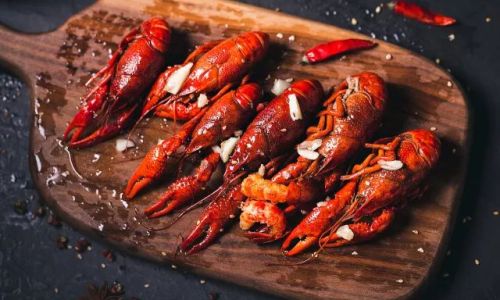
Don’t Forget the Legs
While labor-intensive, crayfish legs contain surprising amounts of meat. Use your teeth to bite off the leg’s tip, then suck or squeeze the meat out. Alternatively, crack the legs with a cracker and extract the meat with a pick.
Tools of the Trade
While crayfish are traditionally eaten with hands, certain tools can streamline the process:
- Seafood Cracker: Essential for cracking claws without shattering the meat.
- Small Fork or Pick: Ideal for digging meat out of joints and crevices.
- Bib and Wet Wipes: To keep clothes clean and hands refreshed.
- Bowl for Shells: A communal dish keeps the table tidy.
Sauces and Seasonings
Crayfish pair wonderfully with dipping sauces. Classic options include:
- Cocktail Sauce: Ketchup, horseradish, lemon, and Worcestershire.
- Remoulade: Mayonnaise, mustard, pickles, and capers.
- Garlic Butter: Melted butter infused with roasted garlic and herbs.
- Spicy Aioli: Mayo, sriracha, lime, and cilantro.
For adventurous eaters, try dipping crayfish in melted cheese, hot sauce, or even chocolate (a surprisingly delightful combination in some desserts).
Etiquette and Table Manners
Eating crayfish is inherently casual, but a few guidelines enhance the experience:
- Embrace the Mess: Crayfish are finger food. Roll up your sleeves, wear a bib, and don’t fret about sauce on your face.
- Share the Bounty: Pass bowls of crayfish around the table, and offer sauces and tools to others.
- Avoid Double-Dipping: Use a communal spoon to transfer sauces to your plate, not directly from the bowl.
- Respect the Chef: If dining at a restaurant, avoid dissecting crayfish too aggressively—it’s considered rude to leave a pile of shells on shared plates.
Health and Safety Considerations
While crayfish are nutritious (rich in protein, vitamin B12, and iron), there are risks to mitigate:
- Allergies: Shellfish allergies are severe and life-threatening for some. Always inquire about allergies before serving.
- Undercooking: Ensure crayfish are cooked thoroughly (shells bright red, meat opaque). Undercooked crustaceans can harbor bacteria like Vibrio.
- Tomalley Consumption: The green tomalley may contain toxins from polluted waters. Pregnant women and children should avoid it.
Global Perspectives on Crayfish
Crayfish traditions vary widely:
- Louisiana, USA: Boils with potatoes, corn, and sausage, seasoned with “crawfish boil” spice mixes.
- Sweden: “Crayfish parties” (kräftskiva) in August, featuring crayfish, snaps (aquavit), and singalongs.
- China: Steamed crayfish with chili and Sichuan peppercorns, often served with beer.
- Australia: Yabbies (a native crayfish) grilled or in pies, paired with local wines.
Conclusion: The Joy of Crayfish
Eating crayfish is more than a meal—it’s a ritual. It slows us down, encourages conversation, and connects us to centuries of culinary heritage. Whether you’re a seasoned pro or a first-timer, the key is to relax, savor each bite, and revel in the communal spirit of the feast. So the next time you’re faced with a pile of crayfish, remember: there’s no wrong way to enjoy them, only more ways to discover their hidden delights.
Now, grab a bib, twist off a head, and let the good times roll! 🦞
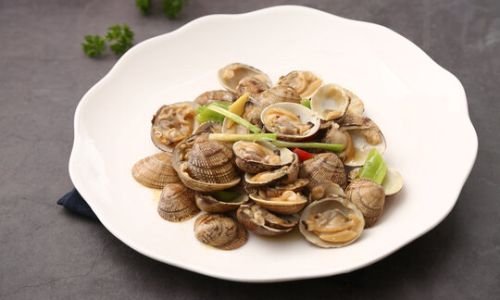
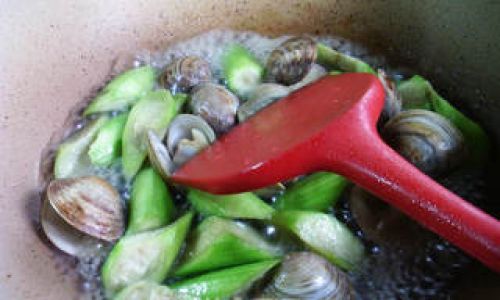
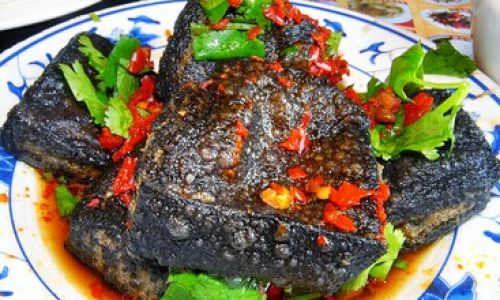


0 comments